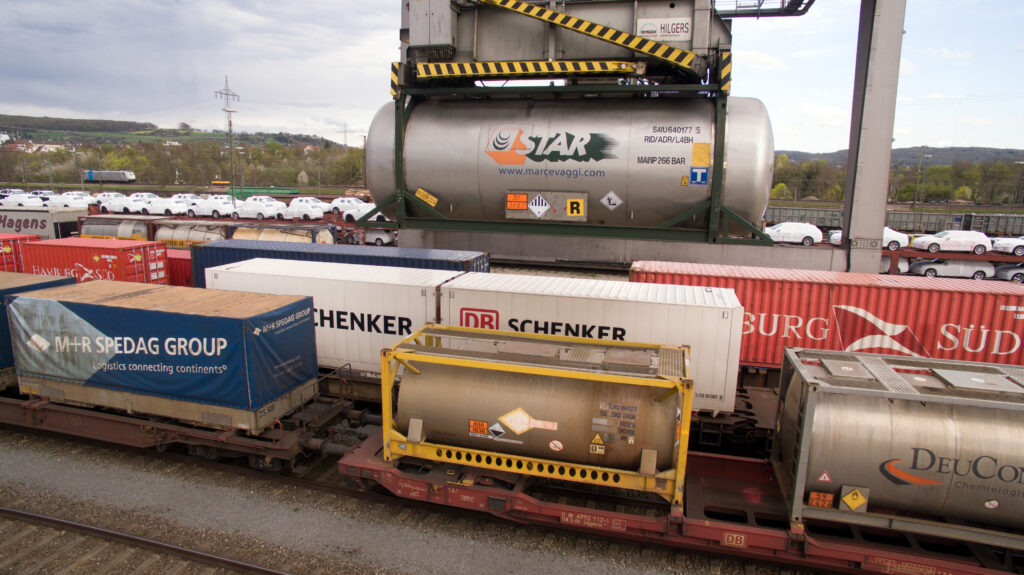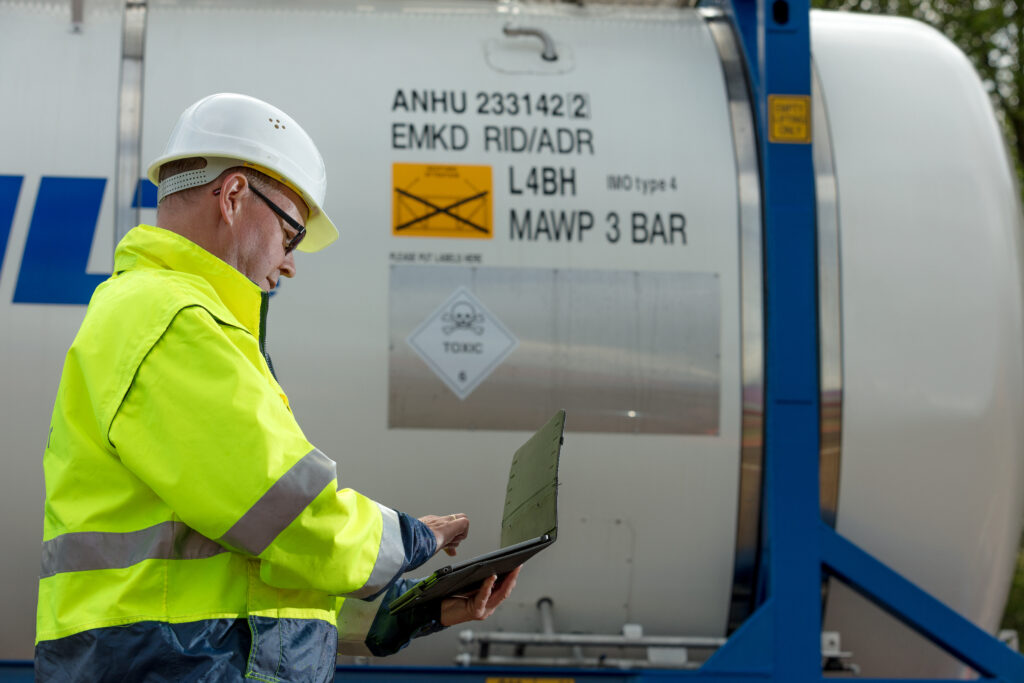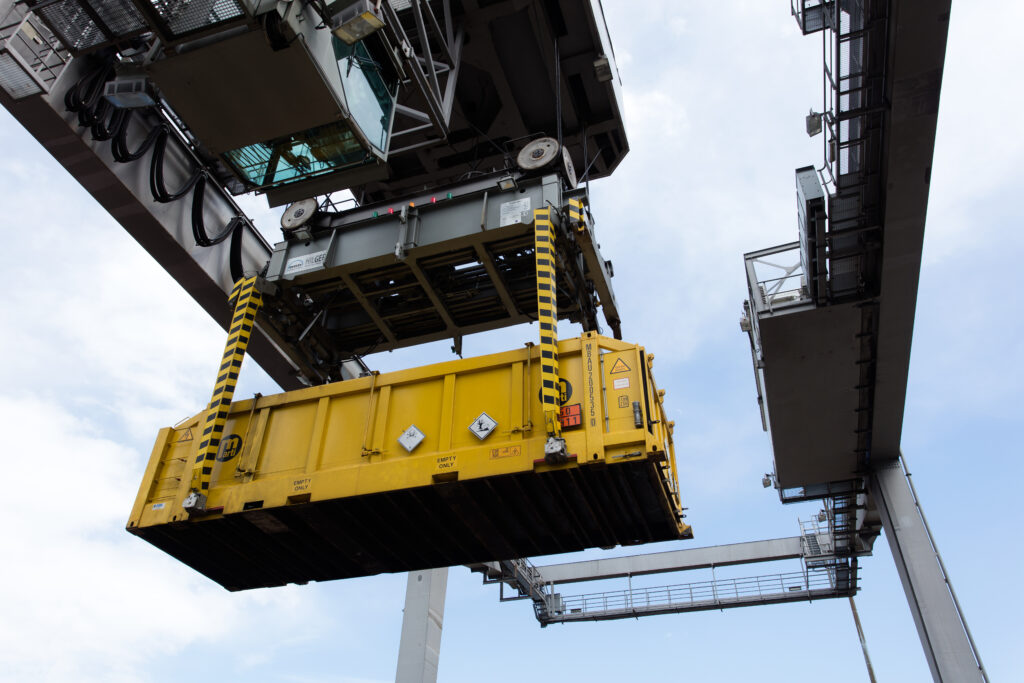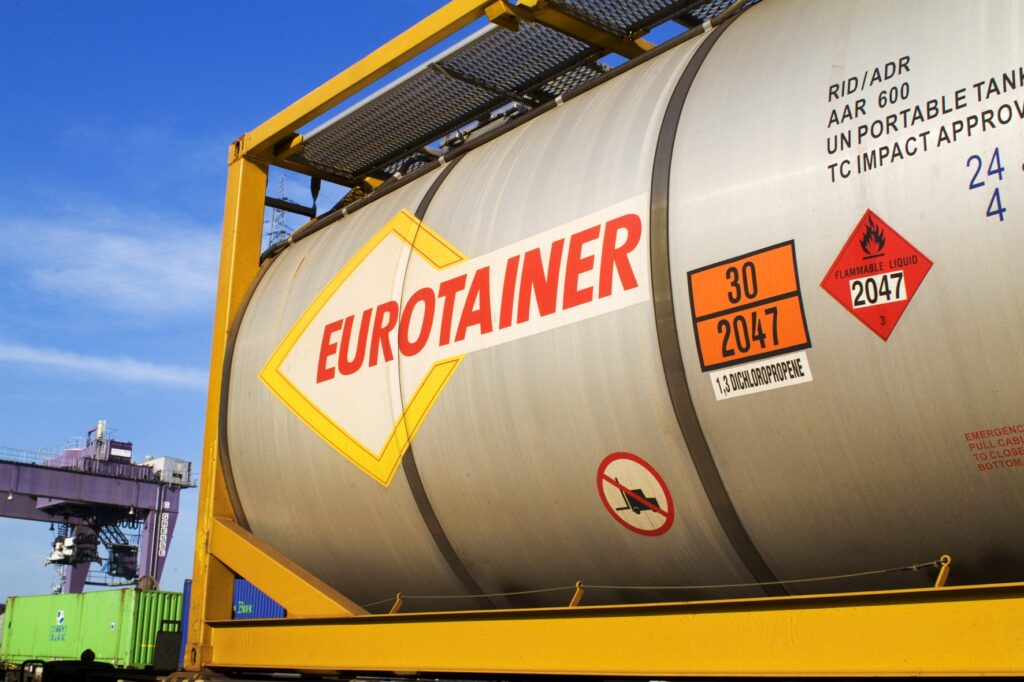This legislation applies
The United Nations (UN) produces a whole series of standard works that govern our interactions on earth. One of them is bound in bright orange: the Orange Book “UN Recommendations on the Transport of Dangerous Goods” (TDG), which has been reissued in revised form every two years for decades. The UN Orange Book is the basis for most mode-specific regulations and intergovernmental agreements on the transport of dangerous goods.
For national and international transports of dangerous goods in Europe, these legal regulations apply:
RID: Règlement concernant le transport International ferroviaire des marchandises dangereuses. RID applies in almost all European countries and in the Asian-African Mediterranean region as far as the Middle East. RID forms Annex C of COTIF (Convention relative aux transports internationaux ferroviaires), published by OTIF, the intergovernmental organization for international rail transport based in Berne.
ADR: Agreement concerning the International Carriage of Dangerous Goods by Road is currently valid in 54 countries, including the entire EU and the EFTA countries Iceland, Liechtenstein, Norway and Switzerland. In addition, Eastern European countries (such as Armenia, Georgia or Ukraine) and countries from Africa (such as Morocco or Uganda) have also joined the agreement.
ADN: Accord européen relatif au transport international de marchandises dangereuses par voide navigation interieure (European Agreement concerning the Carriage of Dangerous Goods by Inland Waterways), applicable in many EU and EFTA countries, but also in Moldova, Russia and Ukraine, for example.
IMDG Code: International Maritime Dangerous Goods Code regulates the transport of dangerous goods in maritime shipping worldwide, issued by the IMO (International Maritime Organization). The IMDG Code is applied in over 170 countries worldwide.
The MoU Memorandum of Understanding also applies to the transport of hazardous goods on Ro/Ro ships in the Baltic Sea.

EU law requires member states to apply RID, ADR and ADN on a mandatory basis. RID, ADR and ADN are transposed into German law by the Gefahrgutverordnung Straße, Eisenbahn und Binnenschifffahrt (GGVSEB). Every two years on the odd-numbered years, RID and ADR are updated – that means again on January 1, 2023, with a six-month transition period until June 30, 2023, during which the old AND the new regulations may be applied.
For purely national transports of dangerous goods by all modes of transport, the law on the transport of dangerous goods (GGBefG/Gefahrgutbeförderungsgesetz) also applies. The GGBefG defines transport not only as a change of location, but also includes the acceptance and delivery as well as the interim, transport-related stay of the dangerous goods in the course of transport.
Based on the nine dangerous goods classes that apply to hazardous goods worldwide, the regulations contain provisions for the transport of dangerous goods, e.g. with regard to permitted quantities, packaging, labeling, mixed loads, necessary vehicle equipment, required accompanying documents, emergency measures or the training of transport participants.
“80 % of our intermodal transports are cross-border,” says Ullrich Lück, Manager Hazardous Goods & Waste Transports and Savety Advidor at Kombiverkehr, “We are therefore engaged in international dialog to define clear framework conditions. We pass these on directly to our customers in consulting and training.”

Ullrich Lück, Manager Hazardous Goods & Waste Transports, Safety Advisor
Ullrich Lück is your contact for all aspects of hazardous goods & waste transport in combined transport. He has been heading the Dangerous Goods Working Group at the International Union for Combined Road-Rail Transport UIRR in Brussels for many years. In addition, Ullrich Lück is also intensively involved in the dangerous goods working groups of UIC (Union Internationale des Chemins de fer) and OTIF (Organisation intergouvernementale pour les transports internationaux ferroviaire). With his experience and knowledge from his now more than 25 years as a dangerous goods specialist, he regularly trains employees at agencies at the terminals on site as well as employees in his own company.
You can find more information on our website or contact Ullrich Lück directly. He will advise you on legal regulations, on packaging and the route of hazardous goods transports and explain to you the special features of intermodal transport with the carriers truck, rail and ship.
Ullrich Lück, Manager Hazardous Goods & Waste Transports, Safety Advisor
Phone: +49 40/74 05 19 60
E-Mail: ulueck@kombiverkehr-gefahrgut.de
Find out why hazardous goods love the rail and read the previous article to this topic.




Comments are closed.